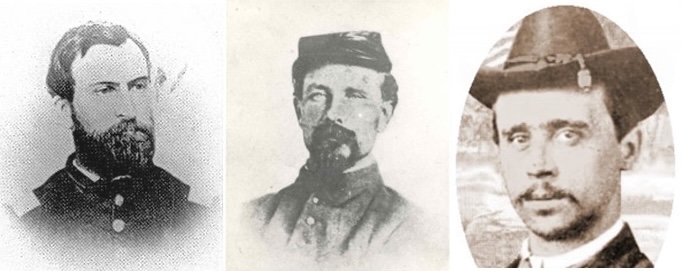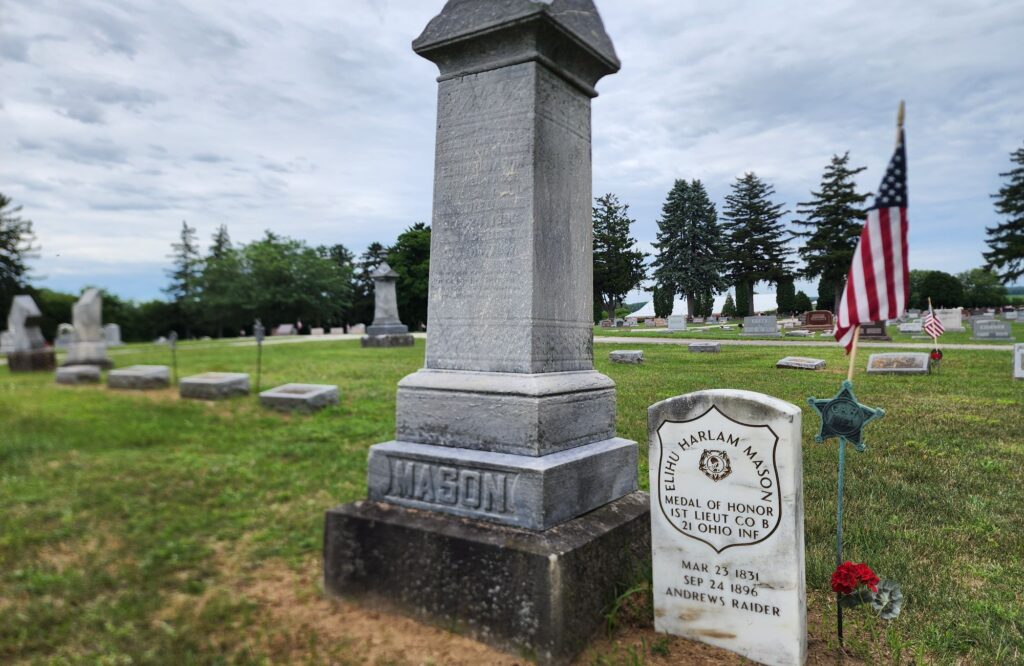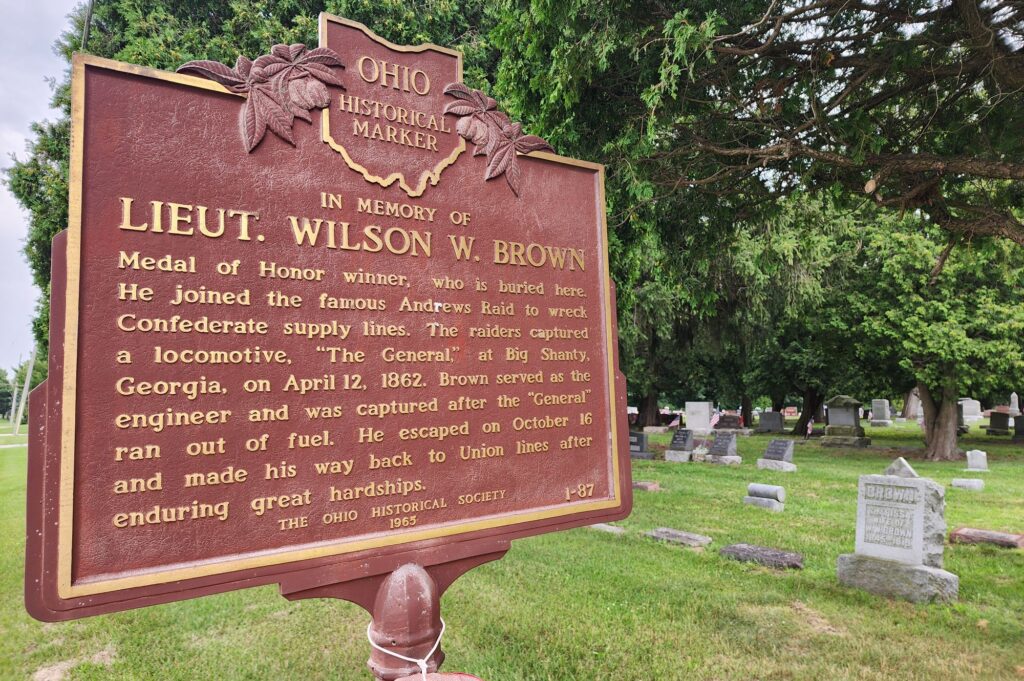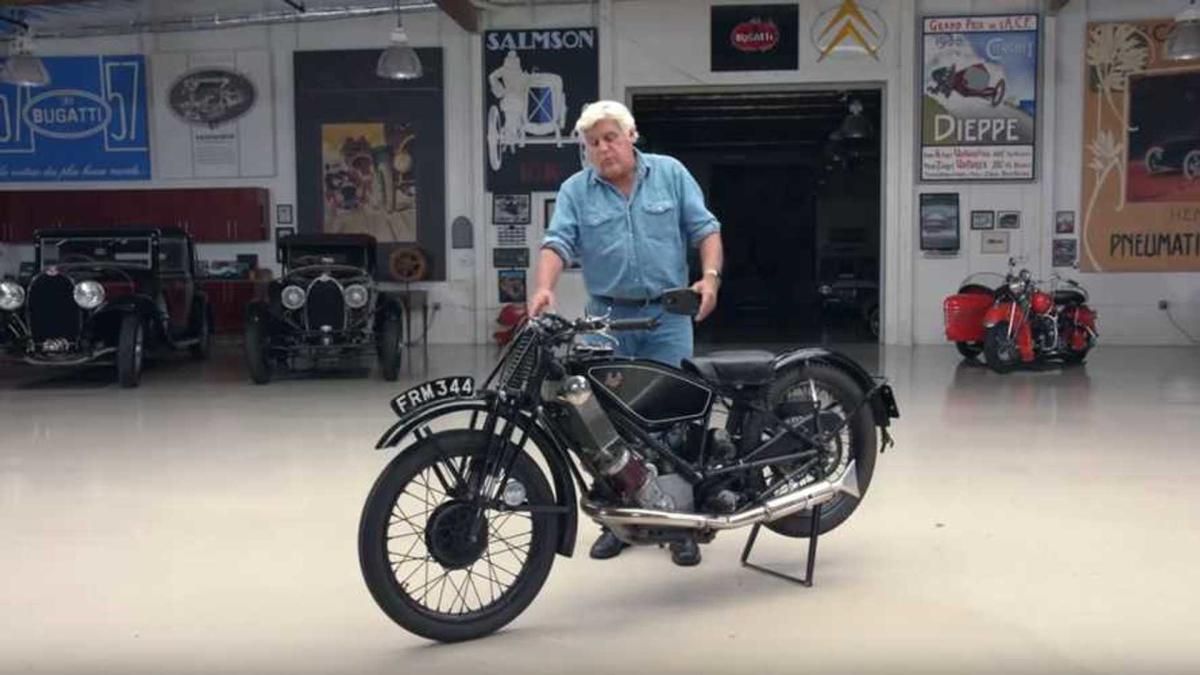The last two Civil War soldiers in the Great Locomotive Chase are finally being honored, three of them will be buried in Wood County – BG Independent News

By JAN McLAUGHLIN
BG Independent News
Two Civil War soldiers who were posthumously awarded the Medal of Honor in the nation’s capital this week share their place in history with three Union soldiers buried in Wood County – all of whom played a role in the so-called Great Locomotive Chase.
The men were part of a volunteer force that penetrated 200 miles into Confederate territory, stole a locomotive and destroyed railroad tracks and telegraph lines on their way north.
On Wednesday, President Joe Biden awarded the Medal of Honor to U.S. Privates Philip G. Shadrach and George D. Wilson, who were captured by the Confederates and executed by hanging, for special valor.
The 22 soldiers, mostly from Ohio regiments, formed a team called the Andrews’ Raiders, named after James J. Andrews, a civilian spy and scout who hatched the plan to hijack the train called “The General” outside Big Shanty, Georgia.
The three soldiers from Andrews’ Raiders buried in Wood County – who have already been awarded the Medal of Honor – are Elihu Harlam Mason in Pemberville Cemetery on Fish Road, Wilson Brown in New Belleville Ridge Cemetery in Dowling and John Alfred Wilson in Union Hill Cemetery north of Bowling Green.
The Andrews Raid on April 12, 1862, was a plan to disrupt the Western & Atlantic Railroad, which ran from Chattanooga, Tennessee, to Atlanta, Georgia. The goal was to hijack a train and tear up tracks, destroy telegraph lines, and burn bridges as the train traveled to Chattanooga.
The raiders were pursued for 87 miles and finally captured a few miles outside of Chattanooga after the locomotive ran out of fuel. All were tried, convicted, and shortly thereafter Andrews and seven of the raiders were executed by hanging. The others were held as prisoners of war. Some escaped and headed north.
The graves of the three Union soldiers buried in Wood County feature special markers acknowledging their roles in the Great Locomotive Chase.

Mason joined the Union Army from Pemberville in April 1861 and was serving as a sergeant in the 21st Ohio Infantry Regiment in April 1862. That month he volunteered for the raid into Confederate territory to disrupt rail traffic in Georgia.
He was captured, but managed to escape from the Confederate prison on October 16, 1862, with other members of Andrews’ Raiders. Mason was seriously ill at the time and could not keep up with the other soldiers. At his own insistence, he was eventually left behind and recaptured by the Confederates.
Mason and five other recaptured attackers were released in a prisoner exchange on March 18 the following year. For his services during the mission, he was awarded the newly created Medal of Honor one week after the exchange, on March 25, 1863. He was the fourth person ever to receive this medal.
Mason later became an officer, reaching the rank of captain. He fought in the Battle of Chickamauga, where he was again captured by the Confederates. He was paroled in December 1864 and discharged in May 1865.
After the war, Mason returned to Pemberville, where he lived until the age of 65.

Brown, an engineer, was one of two Raiders soldiers who knew how to operate the locomotive. He was captured with the others and later escaped on October 16, 1862, returning to Union lines “after enduring great hardships,” according to the historic headstone in Dowling where Brown is buried.

Wilson, who is buried in Union Hill Cemetery, was captured near Union lines in Stevenson, Alabama. Wilson and Mark Wood, who lived in Portage when he enlisted, escaped after sailing down the Chattahoochee River and being rescued by a Union ship. Wood was buried in Toledo.
Other soldiers from this area among Andrews’ Raider include William Bensinger and John Porter, both buried in McComb, and Robert Buffman, who gave his hometown as Gilead, Wood County.
According to a plaque at the Veterans Memorial Plaza on the grounds of the Wood County Courthouse, sparsely populated Wood County (population 18,000 in 1860) provided nearly 2,000 soldiers for the Union Army. About 450 of them died in service.
Soldiers from Wood County served in 17 infantry regiments, two cavalry regiments, and two artillery batteries and participated in most major battles and campaigns. Some served in the Union Navy.
Six were awarded the Medal of Honor: Wilson W. Brown, Robert Buffman, Elihu H. Mason, Charles A. Thompson, John Alfred Wilson and Mark Wood.
“Most local families had a member in the Union Army, and their absence was a heavy burden on the agricultural community,” the plaque reads. “Women, children, and the elderly struggled to maintain agricultural production while supporting the Union cause in other ways. Most notably, each community organized a committee to recruit volunteers for the Union Army, support soldiers’ families, and host patriotic gatherings.”
This plaque commemorates the efforts of the soldiers, sailors and civilians of Wood County who helped keep the United States as one nation.
The two Union soldiers decorated last week for their roles in Andrews’ Raiders were Pvt. George Wilson and Pvt. Philip Shadrach, who were tried and hanged by the Confederacy. In an oversight, historians say, Wilson and Shadrach never received the awards. The soldiers’ descendants accepted the Medals of Honor.



